Guide to 3PL: Introduction
In today’s complex and globalized business environment, efficient logistics management is crucial for the success of any company. This is where Third-Party Logistics (3PL) comes into play.
Imagine you run a business that makes and sells products. You need to get your products from where they’re made to where they’re sold, right? But doing that efficiently can be a big challenge. That’s where 3PL comes in.
Definition of 3PL
Third-Party Logistics, refers to the outsourcing of logistics and supply chain management functions to specialized external service providers. These providers, known as 3PL companies, offer a wide range of services that help businesses streamline their transportation, warehousing, distribution, and fulfillment processes.

Why is 3PL important in supply chain management?
Supply chain management is all about making sure everything runs smoothly from the moment you produce something until it reaches the customer. 3PL plays a crucial role in this process because it takes care of the logistics part – that’s the movement and storage of goods. Third-Party Logistics providers bring extensive expertise and resources to the table. They specialize in logistics management and possess in-depth knowledge of industry best practices, regulations, and market trends. 3PL companies have economies of scale and can spread their operational costs across multiple clients, thereby reducing overall expenses.
Role of 3PL Providers
Think of 3PL providers as the superheroes of logistics. They have the skills, experience, and resources to manage transportation, warehousing, inventory management, and even things like customs clearance and freight forwarding.
Here’s how they help businesses:
Transportation: They figure out the best way to transport your goods, whether it’s by truck, ship, plane, or train. They handle all the details, like finding the most efficient routes and negotiating with carriers.
Warehousing: Sometimes, you need a place to store your products before they’re shipped out. 3PL providers have warehouses where they can keep your stuff safe and organized until it’s ready to go.
Inventory Management: Keeping track of how much stock you have and where it is can be a headache. 3PL providers use advanced systems to manage inventory levels, so you always know what’s available and what needs to be replenished.
Customized Solutions: Every business is different, and 3PL providers understand that. They can tailor their services to meet your specific needs, whether you’re a small startup or a large corporation.
Find Out Top 10 3PL Companies In India
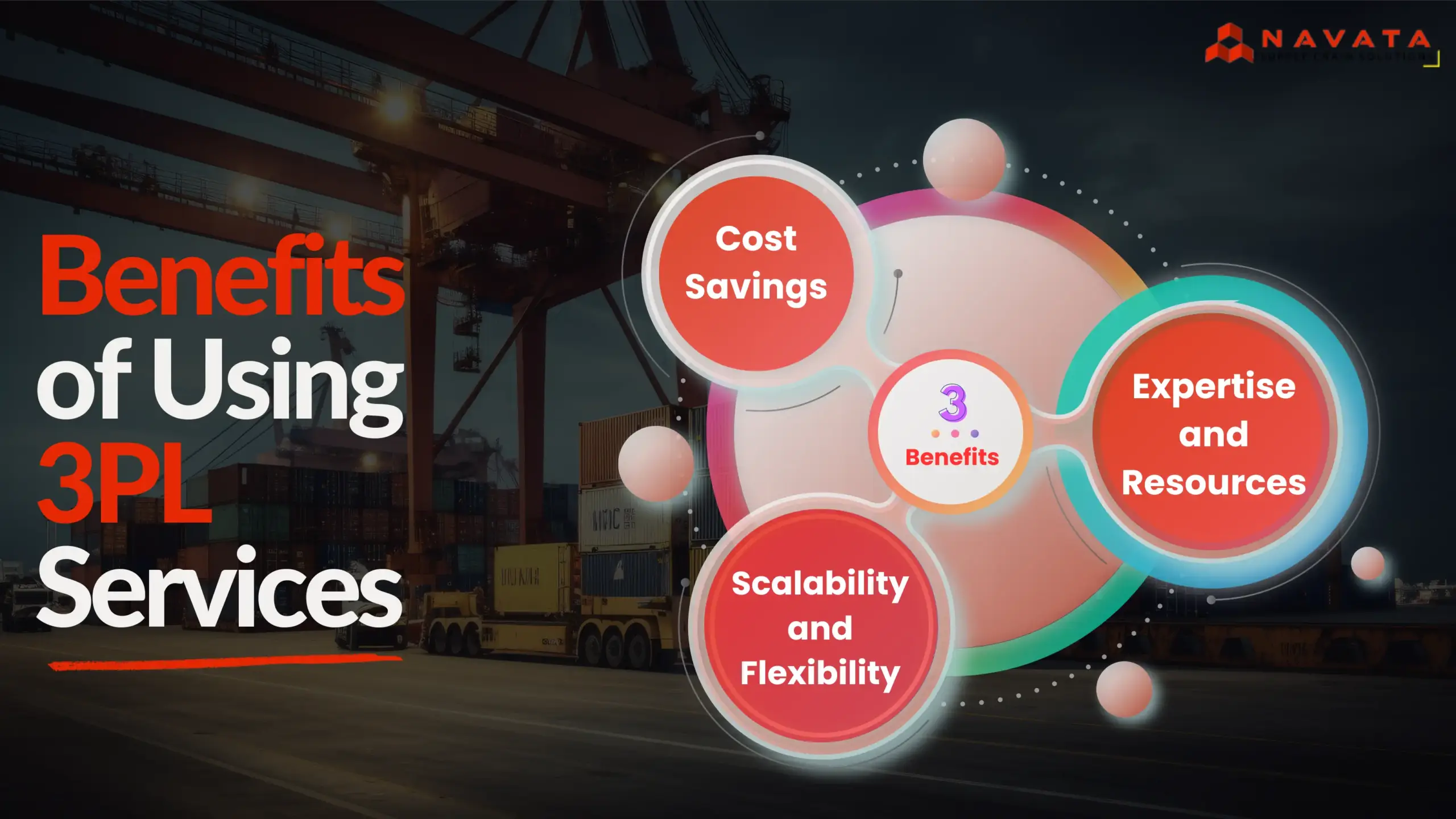
Benefits of Using 3PL Services
Let’s break down the benefits of using 3PL services:
Cost Savings
Outsourcing logistics to a 3PL provider can result in significant cost savings for businesses. Firstly, 3PL providers often have established networks and relationships with carriers, warehouses, and other logistics service providers, allowing them to negotiate better rates for transportation and storage than individual businesses could achieve on their own.
Additionally, by leveraging economies of scale, Third-Party Logistics can spread their fixed costs across multiple clients, reducing the per-unit cost for each client. Furthermore, outsourcing logistics eliminates the need for businesses to invest in expensive transportation vehicles, warehouses, and technology infrastructure, thereby reducing capital expenditure and ongoing operational costs. Overall, by outsourcing logistics to a 3PL, businesses can achieve cost efficiencies and focus their resources on core competencies.
Expertise and Resources
3PL providers bring specialized knowledge, experience, and resources to the table, enabling businesses to benefit from their expertise in logistics management. These providers typically employ logistics professionals who are well-versed in industry best practices, regulations, and technological advancements.
Moreover, Third-Party Logistics invest in state-of-the-art technology and infrastructure, including transportation management systems (TMS), warehouse management systems (WMS), and tracking and visibility tools, which businesses may not have access to or the expertise to implement effectively. By partnering with a Third-Party Logistics, businesses can tap into this specialized knowledge and infrastructure, gaining access to efficient and streamlined logistics processes that improve service levels and customer satisfaction.
Scalability and Flexibility
One of the key advantages of using Third-Party Logistics services is the scalability and flexibility they offer to businesses. 3PL providers have the ability to quickly scale up or down their logistics operations in response to fluctuations in demand, seasonal peaks, or business expansion without businesses having to invest in additional resources or infrastructure.
For example, during peak seasons or promotional events, businesses can leverage the 3PL’s network and resources to handle increased order volumes and meet customer expectations without disruptions. Conversely, during slow periods, businesses can scale back their logistics operations and reduce costs accordingly. Additionally, 3PLs often offer a range of customizable services, allowing businesses to tailor their logistics solutions to their specific needs and preferences. This flexibility enables businesses to adapt to changing market conditions and customer requirements effectively, driving agility and competitiveness in their supply chain operations.
Read In More Detail: Key Benefits of 3PL Warehousing
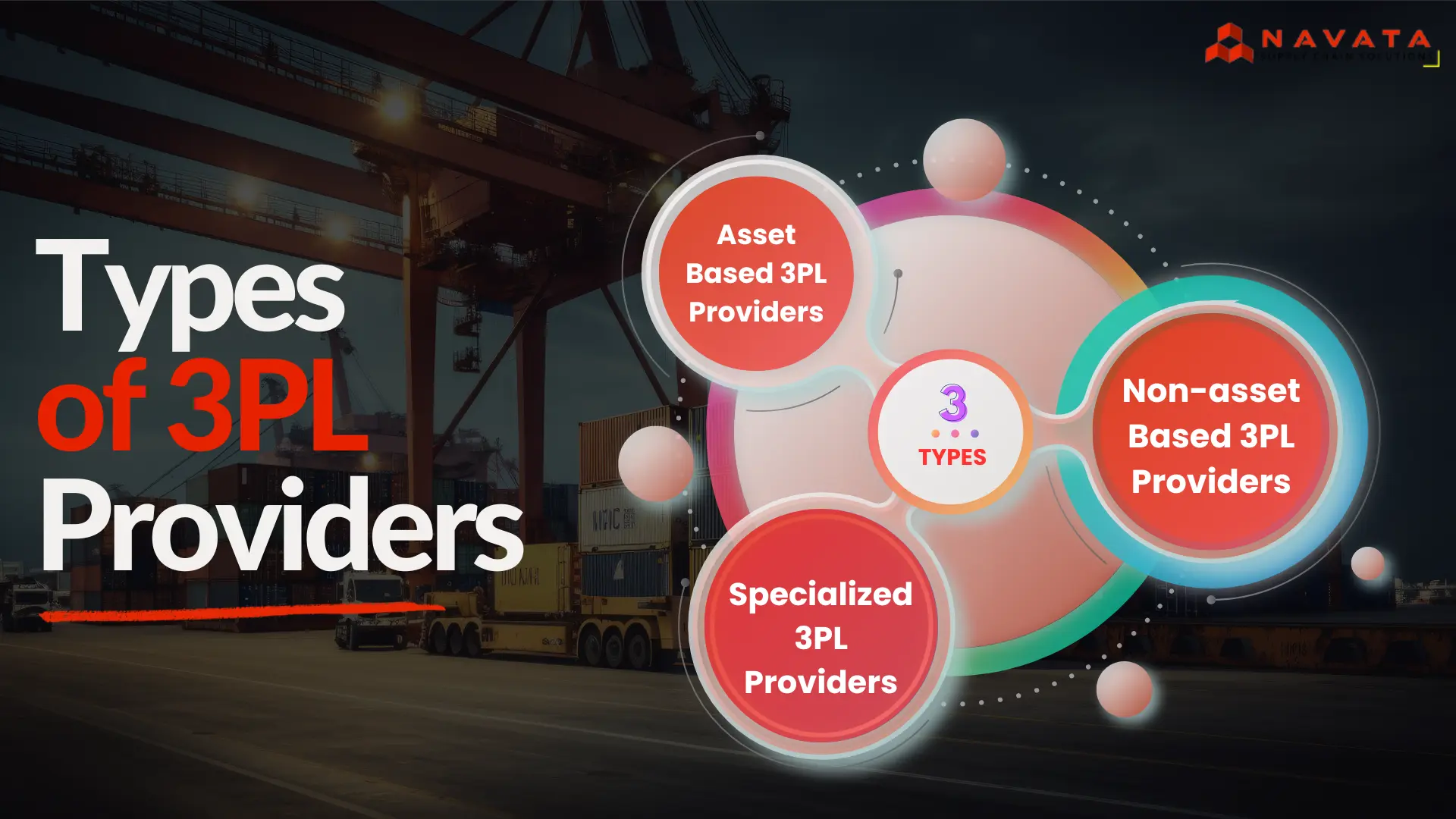
Types of 3PL Providers
Here’s a brief explanation of each types of 3PL providers:
Asset-based 3PL Providers
These providers own and operate their own transportation and warehouse assets. They have their own fleet of trucks, distribution centers, and storage facilities. Asset-based 3PLs offer direct control over logistics operations, providing a higher level of visibility and potentially greater efficiency. They are well-suited for businesses requiring dedicated transportation and warehousing solutions.
Non-asset-based 3PL Providers
Unlike asset-based providers, non-asset-based 3PLs do not own physical transportation or warehouse assets. Instead, they act as intermediaries, coordinating logistics services by leveraging their extensive network of carriers, warehouses, and other partners. Non-asset-based Third-Party Logistics offer flexibility and scalability, allowing businesses to access a wide range of logistics services without the burden of managing assets themselves.
Specialized 3PL Providers
These providers focus on specific industries, services, or logistics requirements. For example, a specialized Third-Party Logistics might specialize in temperature-controlled logistics for industries like pharmaceuticals or food and beverage, ensuring that products remain within specific temperature ranges throughout the supply chain. Alternatively, they might specialize in e-commerce fulfillment, offering tailored solutions for online retailers such as order processing, pick and pack, and last-mile delivery. Specialized 3PL providers offer deep expertise and customized solutions to meet the unique needs of their target industries or services.
Key Considerations When Choosing a 3PL Provider
Service Offerings
When you’re looking for a 3PL provider, you want to check out the types of services they offer. Think of it like going to a restaurant – some places only serve burgers and fries, while others have a whole menu of options from salads to sandwiches to desserts. Similarly, some 3PL companies might only handle transportation, like shipping goods from one place to another, while others might offer warehousing, distribution, and even packaging services.
Before you pick a 3PL provider, make sure they offer the services you need. If you’re a small business that only needs help with shipping, you probably don’t want to work with a 3PL that specializes in huge warehouses and complex distribution networks.
Technology Capabilities
Nowadays, technology plays a huge role in how goods get from point A to point B. Imagine a big puzzle where each piece represents a different step in the shipping process – from ordering products to tracking them as they travel to their destination. Technology helps fit all those puzzle pieces together smoothly.
When you’re choosing a 3PL provider, you want to make sure they’re up-to-date with the latest technology. This could mean things like advanced tracking systems that let you know exactly where your products are at any given moment, or sophisticated software that helps optimize routes and reduce delivery times. Good technology means smoother operations and better efficiency, which ultimately saves you time and money.
Reputation and Reliability
When you’re trusting a Third-Party Logistics provider with your precious cargo, you want to be sure they’re reliable – in other words, you can count on them to get the job done right, every time. Think of it like choosing a babysitter for your pet. You’d want someone who’s responsible, trustworthy, and has a good track record of taking care of animals.
Before you commit to a Third-Party Logistics provider, do some research. Look for reviews from other businesses who’ve worked with them. Are people generally happy with the service they’ve received? Have there been any major hiccups or complaints? A provider with a solid reputation is more likely to handle your logistics needs smoothly and professionally.
Cost Structure
Last but not least, let’s talk money. Different Third-Party Logistics providers have different ways of charging for their services. Some might charge a flat fee for each shipment, while others might have more complex pricing models based on factors like distance traveled, weight of the goods, or even time spent in storage.
It’s important to understand the cost structure of your potential 3PL provider and how it will impact your business. A lower price might seem appealing at first, but if it comes with hidden fees or poor service quality, it could end up costing you more in the long run. On the other hand, a slightly higher price might be worth it if it means better reliability, faster delivery times, or additional services that make your life easier.
By carefully considering service offerings, technology capabilities, reputation and reliability, and cost structure, you can make a more informed decision when choosing a Third-Party Logistics provider that best fits your business needs.
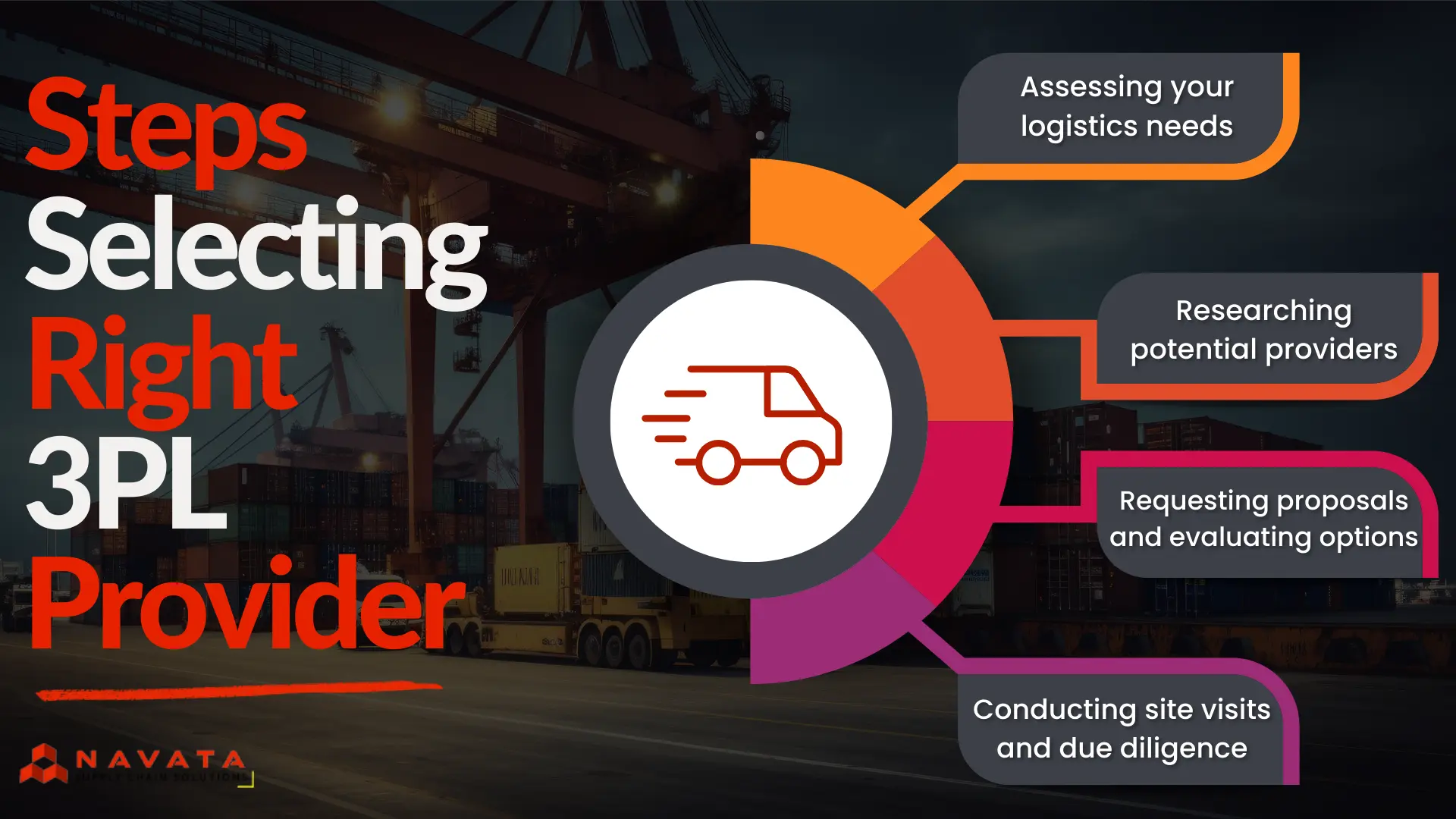
Steps to Selecting the Right 3PL Provider
Assessing your logistics needs
Begin by evaluating your specific logistics requirements. This involves understanding factors such as the volume of goods to be transported, the geographic scope of operations, required services (e.g., warehousing, transportation, distribution), and any special handling requirements (e.g., temperature-sensitive goods). This step lays the foundation for finding a 3PL provider that aligns with your business needs.
Researching potential providers
Once you have a clear understanding of your logistics needs, research potential 3PL providers. Look for companies that specialize in the services you require and have a proven track record of reliability and customer satisfaction. Consider factors such as industry experience, geographic coverage, technological capabilities, and customer reviews. Create a shortlist of potential providers based on your research.
Requesting proposals and evaluating options
Reach out to the shortlisted 3PL providers and request detailed proposals. Provide them with information about your business, logistics needs, and any specific requirements. Evaluate the proposals based on factors such as service offerings, pricing, technology solutions, scalability, and flexibility. Compare the offerings of different providers to identify the one that best meets your needs and budget.
Conducting site visits and due diligence
Before making a final decision, visit the facilities of the top contenders and conduct thorough due diligence. Assess the quality of their infrastructure, equipment, and technology systems. Speak with key personnel to gain insights into their operational processes and commitment to customer service. Additionally, conduct background checks to ensure the provider has a solid financial standing and a history of compliance with industry regulations. This step helps validate the information provided in the proposals and ensures you select a reputable and reliable 3PL partner.
Implementing and Managing 3PL Relationships
Onboarding Process
This involves steps such as initial meetings to discuss requirements, setting up contractual agreements, transferring data and inventory, and conducting training sessions to familiarize the 3PL provider with your business processes. It’s essential to ensure a smooth transition to minimize disruptions in logistics operations.
Communication and Collaboration
Open communication channels between you and your 3PL partner are vital for successful logistics management. Regular meetings, updates on inventory levels, and sharing of relevant data help in coordinating activities effectively. It fosters transparency and ensures that both parties are aligned with goals and expectations.
Performance Monitoring and KPIs
Key Performance Indicators (KPIs) serve as benchmarks to evaluate the effectiveness of your 3PL relationship. These metrics may include on-time delivery rates, order accuracy, inventory turnover, and cost per order. Monitoring KPIs allows you to identify areas for improvement and address any issues promptly to maintain service levels.
Continuous Improvement
Logistics processes are dynamic, and there’s always room for improvement. Regularly evaluating the performance of your 3PL provider and seeking feedback from stakeholders help in identifying inefficiencies and implementing corrective measures. Continuous improvement initiatives ensure that logistics operations remain efficient, cost-effective, and aligned with business objectives over time.
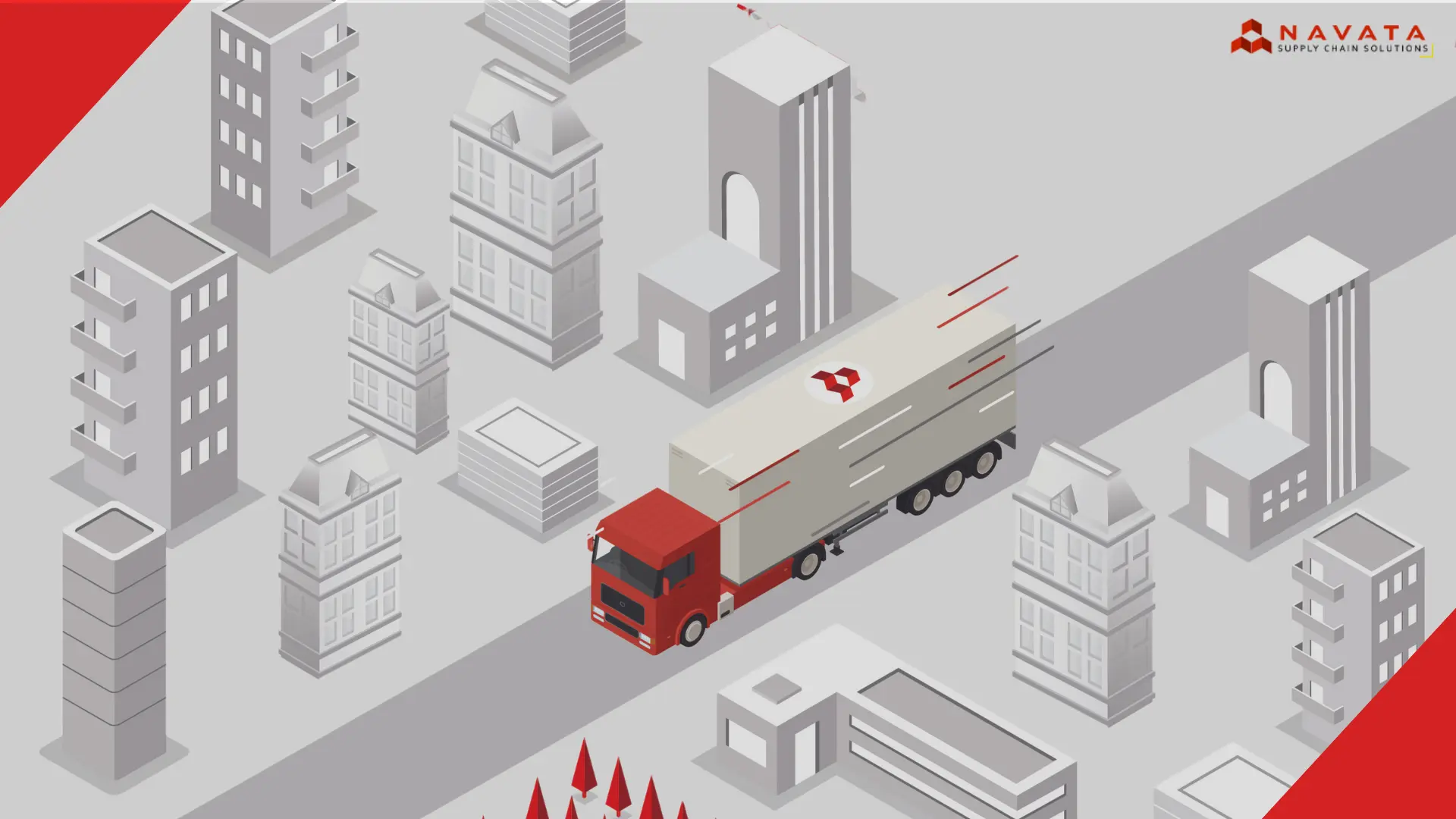
Case Study
Navata SCS Empowers Agricultural Equipment Firm’s Expansion into Rural India
Client Background
A leading agricultural equipment firm, poised to tap into India’s expansive rural market, sought to extend its reach to the remotest corners of the country. Facing the challenge of establishing efficient supply chain operations in these regions, the firm recognized the need for strategic logistics support to facilitate their growth objectives.
Challenges Faced
- Expanding into new regions with limited infrastructure and accessibility.
- Identifying optimal warehouse locations to balance service efficiency and cost-effectiveness.
- Establishing a scalable logistics framework to accommodate seasonal demand fluctuations.
Solution Provided by Navata SCS
The agricultural equipment firm turned to Navata SCS for end-to-end supply chain solutions tailored to their unique requirements. Collaborating closely with the client, Navata SCS devised a comprehensive strategy leveraging their expertise in logistics and rural distribution networks.
Implementation Process
- Strategic Warehouse Placement: Utilizing data analytics and local market insights, Navata SCS recommended optimal warehouse locations to ensure proximity to target markets while minimizing operational costs.
- Flexible Distribution Model: Navata SCS implemented a flexible 3PL facility, allowing the client to scale their warehouse space according to seasonal variations in demand.
- Fortnightly Evaluation: To maintain alignment with the client’s evolving needs, Navata SCS conducted fortnightly evaluations, ensuring continuous optimization of logistics operations.
- Cloud-Based WMS Integration: Navata SCS integrated their cloud-based Warehouse Management System (WMS) to provide real-time visibility and control over inventory management and distribution processes.
Results Achieved:
- Seamless Expansion: The agricultural equipment firm successfully expanded its presence into rural India, reaching previously untapped markets with ease.
- Operational Efficiency: By leveraging Navata SCS’s end-to-end supply chain solutions, the client achieved optimal warehouse placement and streamlined distribution patterns, enhancing service efficiency and reducing costs.
- Scalability and Adaptability: The flexible 3PL facility provided by Navata SCS enabled the client to dynamically adjust their warehouse space, accommodating fluctuations in demand and ensuring uninterrupted operations.
- Long-Term Partnership: Impressed by the success of the pilot project, the agricultural equipment firm chose Navata SCS as their long-term logistics partner, cementing a mutually beneficial relationship built on trust and reliability.
You Might ALso Like To Read: Brief Overview of 1PL, 2PL, 3PL, 4PL, and 5PL
Conclusion
In conclusion, this blog has outlined the essential aspects of selecting and managing a third-party logistics partner for optimal business success. From understanding the benefits of third-party logistics services to evaluating potential providers based on service offerings, technology capabilities, reputation, and cost structure, it’s evident that choosing the right partner is paramount.
Effective communication, collaboration, performance monitoring, and continuous improvement are vital for fostering a successful third-party logistics relationship. Therefore, readers are encouraged to leverage the insights provided in this blog to make informed decisions when selecting and managing their third-party logistics partners. By prioritizing these considerations and implementing best practices, businesses can enhance their logistics operations, drive efficiency, and ultimately achieve their growth objectives in today’s dynamic marketplace.

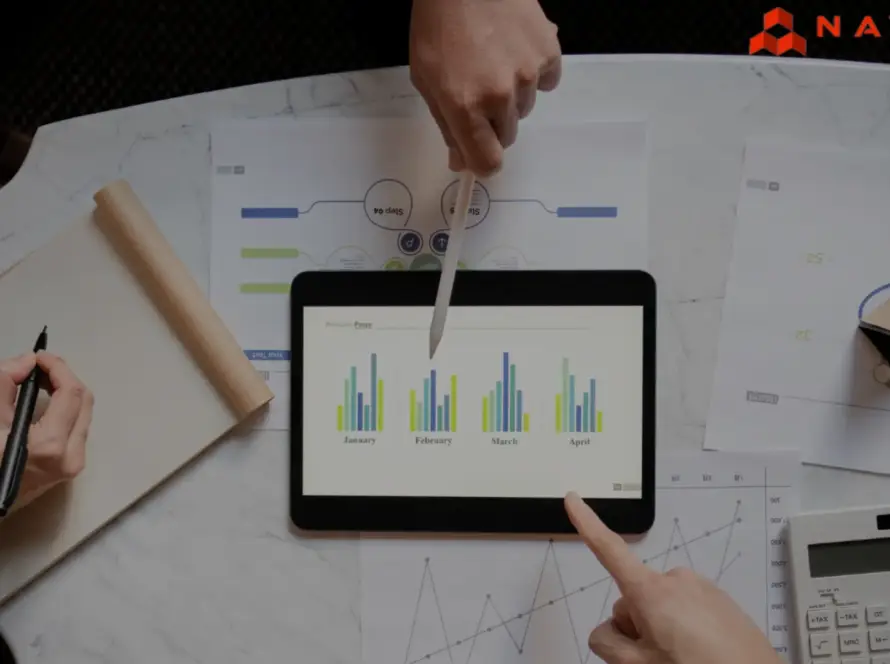
19 Comments
Gita
Hello There. I found your blog using msn. This is an extremely well written article.
I will make sure to bookmark it and come back to read more of your useful
info. Thanks for the post. I’ll certainly return.
Wilma
Why visitors still use to read news papers when in this technological globe everything is available on web?